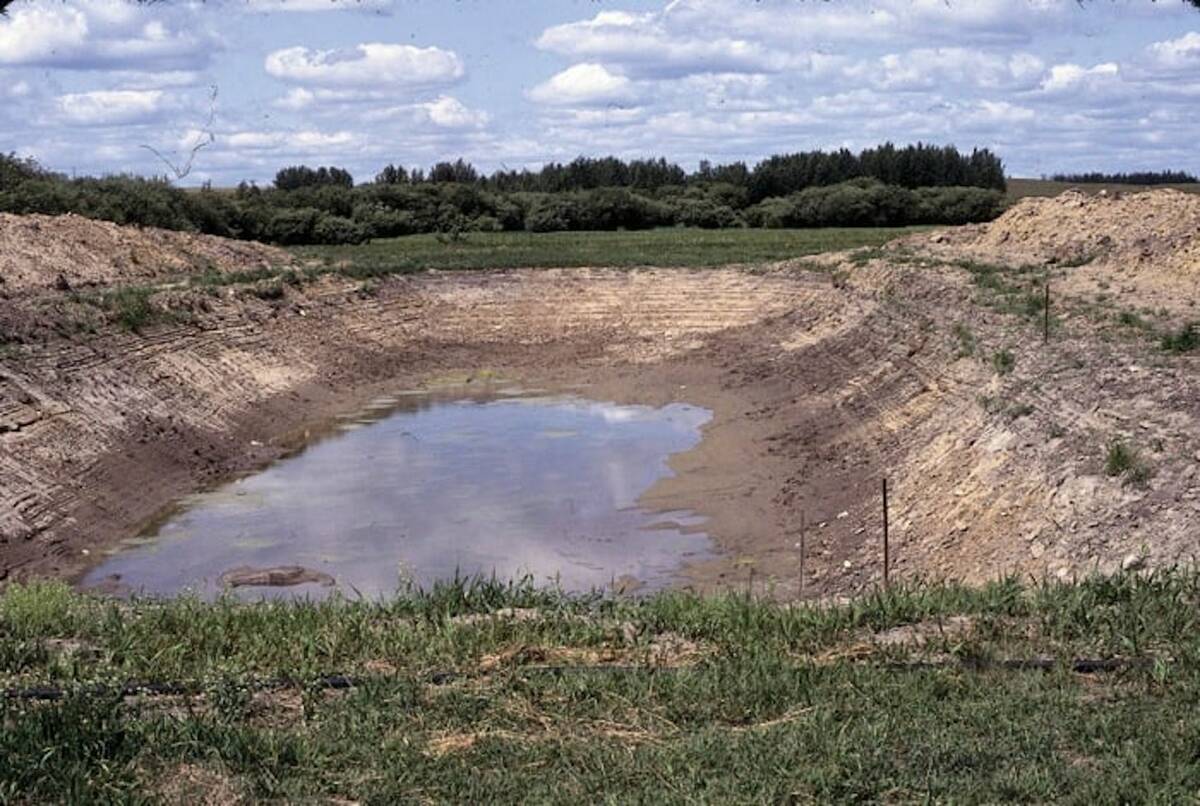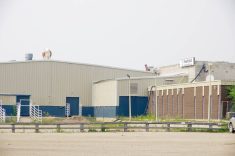Waves of despair are cloaking farms in Great Britain as the number of confirmed cases of foot-and-mouth disease climb in that country.
“There are stories of people building up a herd of pedigreed animals over 15 years and they have to be destroyed. They are heartbroken,” said Phil Saunders of the British Meat and Livestock Commission.
Supported by a farmer levy, the commission represents Britain’s beef, pork and lamb trade.
Telephone helplines have been set up for farmers to talk to counselors about the crisis. Saunders hoped that such measures might prevent further suicides.
Read Also

Dry summer conditions can lead to poor water quality for livestock
Drought conditions in the Prairies has led to an decrease in water quality, and producers are being advised to closely monitor water quality for their animals.
He said it’s not known how the outbreak started.
“It is still being investigated. We got it from somewhere and we know not where.”
Animals move freely within the European Union so the disease may spread.
It is known the disease was first discovered on a farm in Northumberland owned by brothers Robert and Ronald Waugh. It was reported when hogs were sent to an abattoir and the telltale lesions were discovered.
The Waugh brothers fed their pigs swill, made mostly of leftover food from the catering trade. Farmers must be licensed to feed swill and it is supposed to be cooked before feeding because heat should destroy contaminants.
The outbreak appears to be an Asian strain and could have come from anywhere, Saunders said.
“People traveling tend to bring foodstuffs with them,” he said. “All it takes is one meat sandwich.”
This latest crisis is another blow for the already depressed British farming community.
The country had weathered the storm of bovine spongiform encephalopathy, where thousands of cattle died from the brain wasting disease. Hog farmers have been pummeled by classical swine fever and commodity prices have been low.
While foot-and-mouth started among hogs, it quickly spread to sheep and cattle. Sheep have been the hardest hit and with lambing starting this month, the results could be devastating.
The disease is most difficult to diagnose in sheep because lesions are less pronounced on their gums and tongues. Foot lesions may go unrecognized.
At this time of year, many sheep are traditionally moved to upland pastures. Now they are refused movement in efforts to contain the disease.
When livestock are ordered destroyed, veterinarians or professional slaughter teams from the agriculture ministry kill the animals on farm with a captive bolt. They are also incinerated on the farm, but a backlog is building.
The government has set farmer compensation at full market value for all destroyed animals, but so far no one has been paid.
While market prices and slaughter rates are down, consumers do not seem as worried about this latest crisis in the red meat trade. In fact, people were more worried they might run out of beef, lamb and pork.
“There was no panic buying, but there were some increased purchases with people stocking up,” Saunders said.
The commission conducted an attitude survey last week and learned that consumers are still concerned about BSE contamination, but not foot-and-mouth.
“They understand it is an animal problem,” he said.
Cancellation of hunts, races and conferences has become the norm.
People are asked not to walk on public pathways through farming areas or travel from farm to farm.
Even at the commission’s office in Milton Keynes where farmers visit regularly, foot trays and mats soaked with disinfectant are everywhere. The parking lot has equipment to wash trucks and tires.
Auction markets are closed, and farmers send animals directly to slaughter. They must obtain a licence to do this and must abide by a series of rules.
They cannot sell their animals for slaughter if they are within three kilometres of a suspected or confirmed outbreak. Disinfectant must be present on the farm to clean farmers’ and truck drivers’ feet as well as trucks and tires.
No one knows how long this situation might continue.
“It is not going to be a short time. It could be months,” Saunders said.
The weather has not been on the farmers’ side. This spring has been cold, wet and windy, which helps the virus move easily. It could be stopped if the weather turns warm and calm.

















